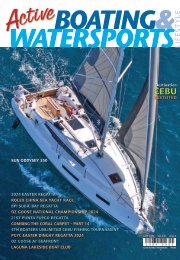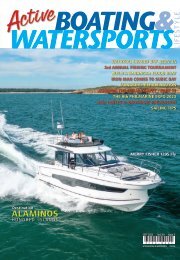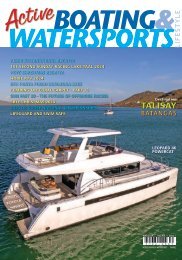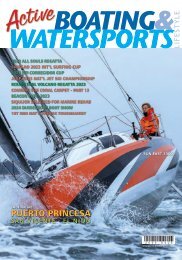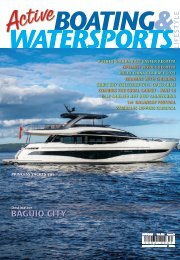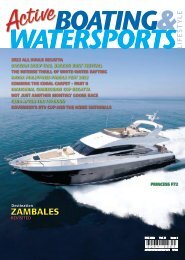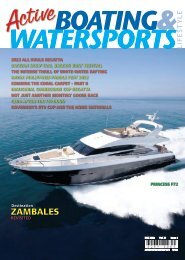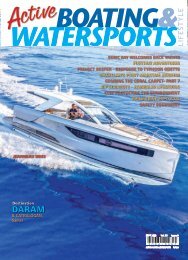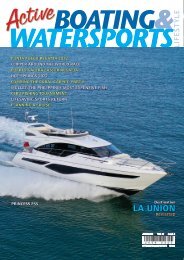ABW Dec 2017
You also want an ePaper? Increase the reach of your titles
YUMPU automatically turns print PDFs into web optimized ePapers that Google loves.
The MB Adventure<br />
banca of the Abentura<br />
Visayan Cruises<br />
last for hours due to large crowd participation in<br />
the event.<br />
The word Sinulog comes from the Cebuano<br />
adverb sulog which roughly means “like water<br />
current movement;” it describes the forwardbackward<br />
movement of the Sinulog dance. The<br />
dance consists of two steps forward and one<br />
step backward, done to the sound of drums.<br />
The dance is categorized into Sinulog-base,<br />
Free-Interpretation, and<br />
Built in Cebu the<br />
MB-Adventure-1 is<br />
designed to allow a<br />
more comfortable and<br />
stylish experience to<br />
Island Hopping.<br />
street dancing. Candle<br />
vendors at the Basilica<br />
continue to perform the<br />
traditional version of the<br />
dance when lighting a<br />
candle for the customer,<br />
usually accompanied<br />
by songs in the native<br />
language.<br />
Sinulog is the ritual prayer-dance honouring<br />
Señor Santo Niño. An image of the Child Jesus<br />
is said to be the baptismal gift the Portuguese<br />
conquistador Ferdinand Magellan gave Hara<br />
Amihan (Humanay) of Zebu (now Cebu) in April<br />
1521. The image, believed to be miraculous, is<br />
housed at the Basilica Minore del Santo Niño in<br />
downtown Cebu City.<br />
According to historical accounts, the Zebu<br />
natives already danced the Sinulog in honour<br />
of their animist idols long before the arrival<br />
of Magellan who led a Spanish expedition on<br />
April 7, 1521. Magellan did not live long after<br />
he introduced Christianity. He died in a failed<br />
assault on nearby Mactan Island at the hands of<br />
a local chieftain named Lapu-Lapu.<br />
Survivors of Magellan’s expedition left behind<br />
the image to be discovered 44 years later. The<br />
expedition led by Miguel Lopez de Legaspi<br />
bombarded the native settlement when they<br />
arrived on April 28, 1565. In one of the burning<br />
huts, one of Legaspi’s men, Juan Camus,<br />
discovered the image of the Santo Niño inside<br />
a wooden box beside other idols. This time<br />
however, Legaspi discovered that the natives<br />
already dance the Sinulog honouring the Santo<br />
Niño.<br />
Today the Sinulog commemorates the Filipino<br />
people’s acceptance of Christianity, and their<br />
rejection of their former animist beliefs. The first<br />
of these conversions happened in 1521 on the<br />
island of Cebu, when Rajah Humabon and his<br />
queen Amihan (Humamay) were baptized along<br />
with their subjects, becoming Carlos and Juana<br />
of Cebu.<br />
58<br />
The Sinulog dance moves are basically two<br />
steps forward and one step backward as the<br />
dancer sways to a distinct rhythm of drums.<br />
This movement resembles the current (Sulog) of<br />
what was known as Cebu’s Pahina River.<br />
Island Hopping with a Difference<br />
Abentura Visayan Cruises is a dream trip on the<br />
most modern designed banka in the Philippines,<br />
with special care taken in safety and comfort.




